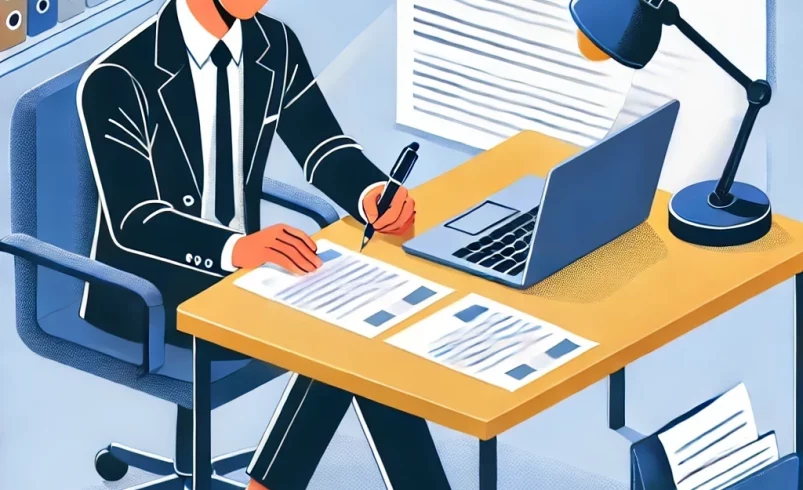
Spot Grant Writing Mistakes Before You Submit
At L Professional Writing, we’re all about learning and growing, and mistakes are a natural part of growth. With grant writing and submission, there are plenty of opportunities to make an innocent mistake. Each portal is a little different, required attachments vary from one funder to another, and each funder has their own narrative preferences.
Then, there are day-to-day distractions in a grant writer’s (or Executive Director’s) life, post-it notes that get lost in the shuffle, dates that get mixed up, miscommunications about who’s doing what, last-minute changes, and on and on.
If you’ve made a mistake submitting a grant, don’t fret. We’ve all been there. Best-case scenario, the funder will reach out and request an amendment or missing attachments. In any other scenario, the next step is to learn from the mistake and look out for it in the future.
When the time comes to submit, take a moment to review the following common grant writing mistakes. Chances are, you’ll spot at least one thing that can be improved!
Poor Alignment
One funder response that truly stings is a denial letter that essentially says: We don’t fund that.
“That” could be:
- Your mission type (e.g.: education, housing, animal welfare)
- The grant type you proposed (e.g.: program/project, general operating, capital)
- The location(s) you serve
- Your organization’s religious affiliation(s)
- The age of your organization (e.g.: some funders don’t fund newly-established nonprofits)
The key to avoiding this scenario is to conduct funder research and thoroughly vet each opportunity for alignment. Good funder research will help ensure you’re applying to a grant you can actually win.
Missed Grant Deadline
Of course, missing a grant deadline is one of the biggest mistakes to avoid. However, meeting deadlines is easier said than done for small, mission-focused teams. To improve your chances, try to do a deep dive on the grant and its requirements at least three to four weeks ahead of the deadline. That way, you can start prepping necessary attachments and strategize about how to frame your request. Then, when the due date nears, don’t wait until the last minute. You may run into an issue submitting in the grant portal that sets you back, or you may need an additional attachment you hadn’t expected.
Unclear Ask
A beautiful, well-written narrative won’t gain traction with a funder if you don’t clearly state your request, who or what the request will benefit, and how funding will be used. Otherwise, the grant reviewer(s) can’t make an informed decision about your request – and most won’t have time to ask for clarification.
Grant requests should include a statement like:
“A grant of $12,500 would support our purchase of 12 iPads to track student progress and outcomes, which will help us better understand and address the local children’s illiteracy crisis and serve 50 children in [CITY/COUNTY].”
A general operating request should include a statement like:
“Funding will go toward operational expenses that keep our mission going strong, such as rent, transportation and employee benefits.”
Empty Case Statement
You know and understand the issues and needs that drive your organization. Every day, you witness the needs in your community and how the use of your services and programs proves that need. So, it’s easy to forget to make a detailed, well-researched, data-backed case for your grant request. Scholarly research, statistics, real data from your organization, and success stories all serve to make the case for your grant request.
It’s also important to make the case for your approach to the issue or need. Is it based on research and proven success?
One great approach is to think of your case statement or need statement like an inverted triangle: Start by thinking of the global problem, then narrow it down to the national, state, city and neighborhood level. Drill down as much as possible to make the case for the specific grant and the region and population the funder focuses on.
An Unrealistic Pitch
Your grant request and goals should be feasible and measurable. Expected outputs and outcomes are a critical component of any grant. Funders want to feel confident that you’ll be able to achieve the goals you set for the grant request, and that you have a realistic idea of what to expect in the next year, two years, and on. If you state your goals as grandiose as “ending child illiteracy in Colorado in 2025” or “housing all transient teens in 2025,” the funder will be skeptical. Here are a few examples of more realistic goals:
“At least 30 K-5 teachers in El Paso County will attend the free webinar series, Strategies to Help Improve Child Literacy in Your Classroom, and receive the associated Child Literacy Toolkit.”
“Of those webinar attendees who respond to our SY-end survey, 85% will say the webinar series and toolkit made a significant difference for their students.”
“[Organization] will provide wrap-around services to 40 transient teens in 2025.”
“At least 75% of transient teens who participate in our program will secure housing within the program period.”
Micro-Level Mistakes to Catch
In the final edit, take a fine-tooth comb through the grant – from the initial eligibility requirements to the attachments. It’s also helpful to have a second set of eyes on the grant to catch mistakes – or even find opportunities to enhance the request!
Missed Details
Take a microscope to the grant request and double-check the details. Is your narrative focused on the right region for this funder? Is your grant request the right size (some may specify, such as no larger than 10-20% of your organizational budget)?
Passive Voice
Writing in a passive voice can trip up the reader and often requires more effort on their part to understand specific details. You don’t want to slow a grant reviewer down. According to Grammarly, “active voice is a more effective way to communicate the ideas, themes, and facts you’re expressing.” For help making the adjustment, check out Grammarly’s advice for changing passive voice to active.
Casual Tone
Regardless of how familiar you are with the funder and their team, keep the tone of your grant request professional and formal. We always favor a more polished approach over that of a candid email.
Inconsistencies
Inconsistencies are to be expected in the initial draft of a grant proposal, especially if you put it together over time and have multiple individuals providing edits. Before you finalize the proposal, review it for inconsistencies such as switching point of view, discrepancies in the budget or numbers served, goals for the grant request, etc.
Poor Spelling and Grammar
Always read through the final proposal to correct any improper spelling or grammar. If you’re unsure of your proficiency, don’t hesitate to ask for a second opinion.
Jump back to our Grant Writing Essentials Guide for more tips and best practices.
L Professional Writing is a professional grant writing agency in the Pikes Peak region. We have extensive grant writing expertise and knowledge of funders in our region and beyond. Contact us at contact@lprowriting.com for a one-hour fit call/consultation.




